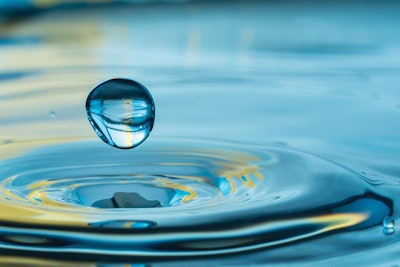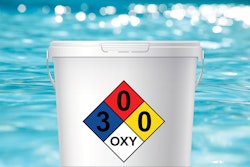
The project originally began as a response to 5,000 public healthy officials from across the country who overwhelmingly endorsed the development of a national water quality standard. The goal was to provide more safety to the swimmer or bather through a set of voluntary minimum guidelines. Although many water quality parameters do not have a direct impact on public health, they can severely influence the operation of an aquatic venue. Poor operation can lead to closure which precludes the swimmer or bather from enjoying the pool or hot tub.
The result — ANSI/APSP/ICC-11 American National Standard for Water Quality in Public Pools and Spas (APSP-11) — is a benchmark for the pool, hot tub and spa industry based on science, verifiable data and best practices. In producing it, the writing committee examined many common practices in the industry and included in the document practices with scientific justification.
ORIGINS
APSP-11 is an approved American National Standard (ANS) listed by the American National Standards Institute (ANSI), a non-profit organization that administers and coordinates the U.S. voluntary standards and conformity assessment system. They facilitate development of an ANS by accrediting industry organizations such as the Pool & Hot Tub Alliance (PHTA) as ANSI-Accredited Standards Developers (ASDs). ANSI requirements afford a rigorous third-party process for standards development, called due process, which includes open meetings, written procedures, public notifications, appeals and consensus agreement among a balanced committee of directly and materially affected parties (see PHTA Standards Development Process and PHTA Standards webpages).
APSP-11 was developed by a diversified group of stakeholders, including public health and code officials, architects, regulatory agencies, academics, representatives of safety organizations, consultants, and subject matter experts, as well as pool and spa professionals. A public review of the draft of the standard and approval by the consensus voting body was required. All views and objections were considered, and a concerted effort was made toward their resolution. PHTA’s 16 standards cover both public and residential swimming pools, hot tubs and spas. They promote aquatic safety and provide the basis for adoption of best practices into law by state and local jurisdictions.
SANITIZER IS NECESSARY TO PROTECT BATHERS
Chlorine is the most popular sanitizer. In Section 5.2 Free available chlorine (FAC), Subsection 5.2.1 states, “A minimum free available chlorine residual of 1.0 shall be maintained at all times and in all areas of pools not using cyanuric acid as a chlorine stabilizer.”
This minimum was established for common bacteria, such as E. coli, Shigella, Pseudomonas aeruginosa, and Legionella pneumophila, which have CT values (concentration x time) for bacterial inactivation of <1. CT is one method to establish the minimum treatment necessary to disinfect water (and the aforementioned bacteria). This means it takes 1 ppm of FAC one minute to kill these organisms. These types of bacteria cause illness as reported by the CDC. Between 2015 and 2019, the CDC reported 65 outbreaks of Legionella resulting in 13 deaths. It appears in these cases that the APSP-11 requirements for 1 ppm FAC were not followed.In Section 10 Contaminants,
10.1 Combined chlorine, Subsection 10.1.1 states, “The concentration of combined chlorine in pools shall not exceed 0.4 ppm.” A report of an indoor water park where these levels exceeded the standard included the following symptoms experienced by swimmers and bathers: eye irritation, cough, nose irritation, wheeze, shortness of breath, chest tightness, sore throat.
pH CONTROL PROTECTS BATHERS AND EQUIPMENT
In Section 7 Water balance, Subsection 7.1 states, “The pH shall be maintained between 7.2 and 7.8.”
When sodium hypochlorite is added to water, it produces hypochlorous acid and the hypochlorite ion. The testing method does not distinguish between these two. Hypochlorous acid is a far more effective sanitizer and oxidizer than the hypochlorite ion. The ratio of the two is dependent on the pH of the water. At a pH higher than 7.8, only 30% of the FAC is hypochlorous acid. This reduces the effectiveness of any amount of chlorine that is in the pool or hot tub water. As described above, sanitizer is a very important part of avoiding numerous recreational water illness situations.
With low pH, an increased amount of hypochlorous acid is obtained(over 70% for pH <7.2) which is good for sanitizer efficiency. However, we have to consider what it does to the swimmer. Eye, nose and skin irritation occurs in some sensitive populations with a pH below 7.2. Furthermore, many manufacturers do not recommend operating their equipment below a pH of 7.2. In some cases, it voids warranties for their products.
ALKALINITY IS CRITICAL TO pH CONTROL
We have learned that proper pH is important for chlorine efficiency and swimmer comfort. Alkalinity is the next layer to this process. It stabilizes the pH, maintaining the hypochlorous acid in a more effective range. Total Alkalinity is under Section 7 Water balance. Subsection 7.2 Total Alkalinity states, “Total Alkalinity shall be maintained between a minimum of 60 and a maximum of 180 ppm.” Alkalinity buffers the system to minimize pH change. When alkalinity is below 60 ppm, pH can “bounce,” which means there will be a significant change in the pH level due to various factors such as bather load or addition of chlorine. When total alkalinity is above 180 ppm, it will make it difficult to lower pH in the water. Furthermore, high alkalinity, along with high hardness (discussed below), will create scale on many surfaces of the pool or hot tub. Coping, pipes and metal surfaces are just a few of the places on which this scale can accumulate. Scale in pipes reduces water circulation, filtration, and heating efficiency. This does not contribute to the overall efficient operation of a pool or hot tub system.
IMPROPER WATER HARDNESS CAN DAMAGE POOLS & SPAS
Hardness is principally made up of two ions, calcium and magnesium, but pool and spa water hardness is controlled through calcium content. Section 7.3 states, “Pool water calcium hardness shall be maintained between a minimum of 150 and a maximum of 1,000 ppm as CaCO3. In spas, calcium hardness shall be maintained between a minimum of 100 and a maximum of 800 ppm as CaCO3.” When levels are below the minimum, water could etch plaster, dissolve concrete, dissolve grout, and pit pool decks. While this can happen on a minimal basis and just look aesthetically displeasing, more aggressive situations could lead to degradation of a deck, which could cause a tripping hazard or leaking of the vessel itself. In situations where the maximum level has been reached for a prolonged period of time, water circulation can be greatly affected. Circulation is important to not only mix chemicals, but also to distribute the water so it reaches the filter and removes debris so the sanitizer can work on the germs and bacteria we cannot see. Scale on heaters also means more energy is needed to heat the water.
All of the parameters in the APSP-11 Standard work together to maintain a pool or hot tub that can be enjoyed by many while operating at an efficient level that does not waste chemicals, keeps swimmers safe, and allows a long, useful life for equipment.
Details on water quality parameters will be included in a PHTA session on another standard, the new ANSI/PHTA/ ICC-2 American National Standard for Public Pool and Spas Operations and Maintenance. This presentation will be held in August 2023 at the NEHA Annual Educational Conference (AEC) in New Orleans. More information on PHTA standards development can be found at phta.org/standards.
REFERENCES
1. ANSI/APSP/ICC-11 2019 American National Standard for Water Quality in Public Pools and Spas, https://issuu.com/thephta/docs/apsp- 11_2019, Pool & Hot Tub Alliance (formerly The Association of Pool & Spa Professionals), 2019
2. PHTA Standards Development Process webpage, https://www.phta.org/standards- and-codes/phta-standards/phta-standards- development-process/, Pool & Hot Tub Alliance, 2023
3. PHTA Standards webpage, https://www.phta.org/standards-and-codes/phta-standards/, Pool & Hot Tub Alliance, 2023
This article first appeared in the June 2023 issue of AQUA Magazine — the top resource for retailers, builders and service pros in the pool and spa industry. Subscriptions to the print magazine are free to all industry professionals. Click here to subscribe.











































